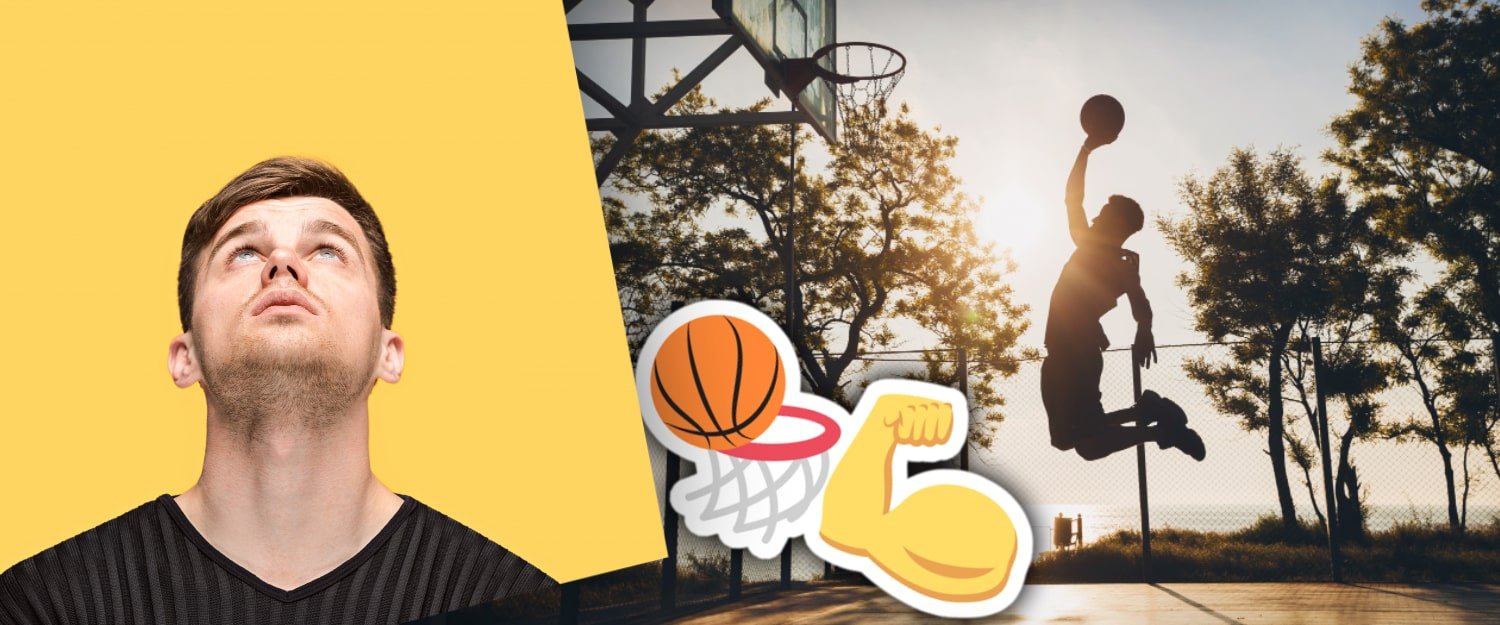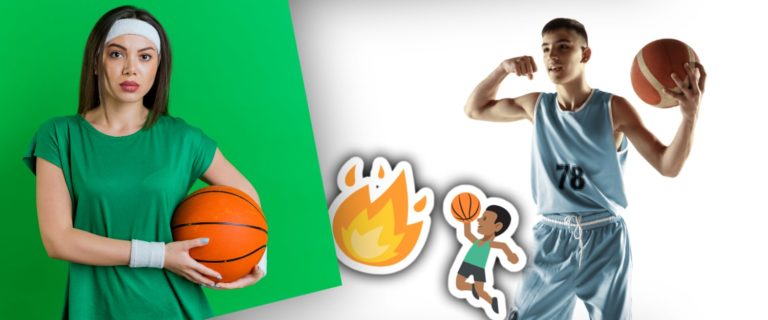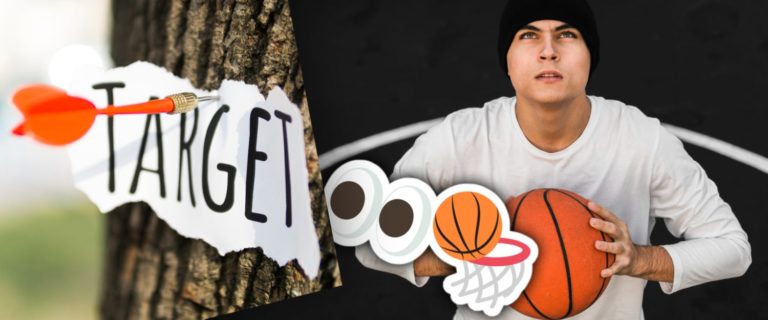Reasons Why NBA Players Can Jump High: A How-To Guide
Ever wonder how NBA players can jump high?
They train differently than other people, so that’s the trick. The general consensus is that all you have to do is squat and jump as high as you can. For a short while, this may work. Yet, as your body gets accustomed to the same movement patterns, it will eventually stop responding. We’ll discuss the reasons NBA players can jump higher in this blog post and what you ought to be doing to heighten your vertical!
Why Can’t I Jump High?
Lack of strength and power. Most people who want to jump higher focus on squats and leg presses. But this isn’t the right way to go about it! NBA players can jump high because they rely more on their lower body muscles than anything else. They also need them for explosive movements such as jumping up in the air after a rebound or blocking shots from other players.
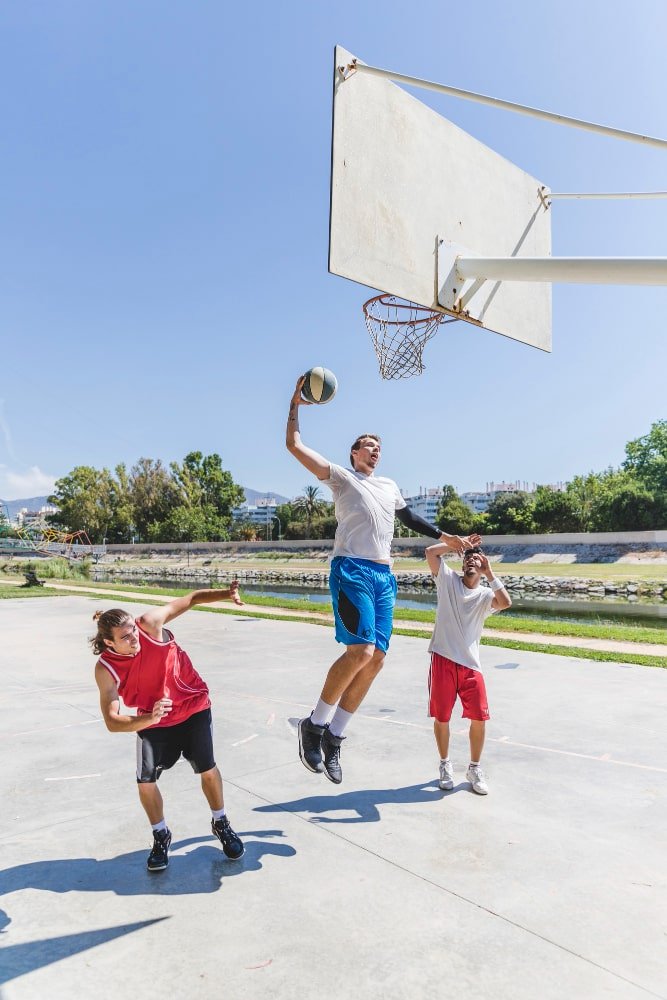
Increase Strength/Power
Including strength training in your routine is a wonderful approach to reach this aim if you want to increase your vertical jump. A couple of the strength exercises listed below will enable you to jump higher:
- Squats: Squats are a fantastic exercise for building strong quads, hamstrings, and glutes. Standing with your feet shoulder-width apart, stoop down as if you were sitting in a chair, then push yourself back up to standing. A barbell or few dumbbells can be used to add weight.
- Lunges: Lunges are yet another fantastic workout for strengthening the legs. Standing with your feet shoulder-width apart, advance with one foot as far as you can. Push yourself back up to a standing position after lowering your body until your front thigh is parallel to the ground. the other leg, and repeat. By using a barbell or holding dumbbells, you can add weight.
- Deadlifts: Deadlifts are an excellent exercise for developing the lower body’s strength, particularly in the glutes and hamstrings. Stand with your feet shoulder-width apart and a barbell in front of you to perform a deadlift. Keep your back straight while bending your knees and hips to hold the barbell with both hands. The barbell should be raised to standing posture and then returned to the ground.
Always warm up before starting a strength training session, and if you’re new to strength training or have any questions about your form or technique, speak with a professional personal trainer.
Developing Better Muscle Fibers
You can’t expect your legs to get suddenly bigger unless you’re making some serious changes to what types of food that you eat (i.e.- adding protein shakes). If your goal is increasing your vertical then stretching/mobility exercises will be most helpful when trying to improve explosiveness off one foot at a time vs both feet leaving the ground simultaneously.
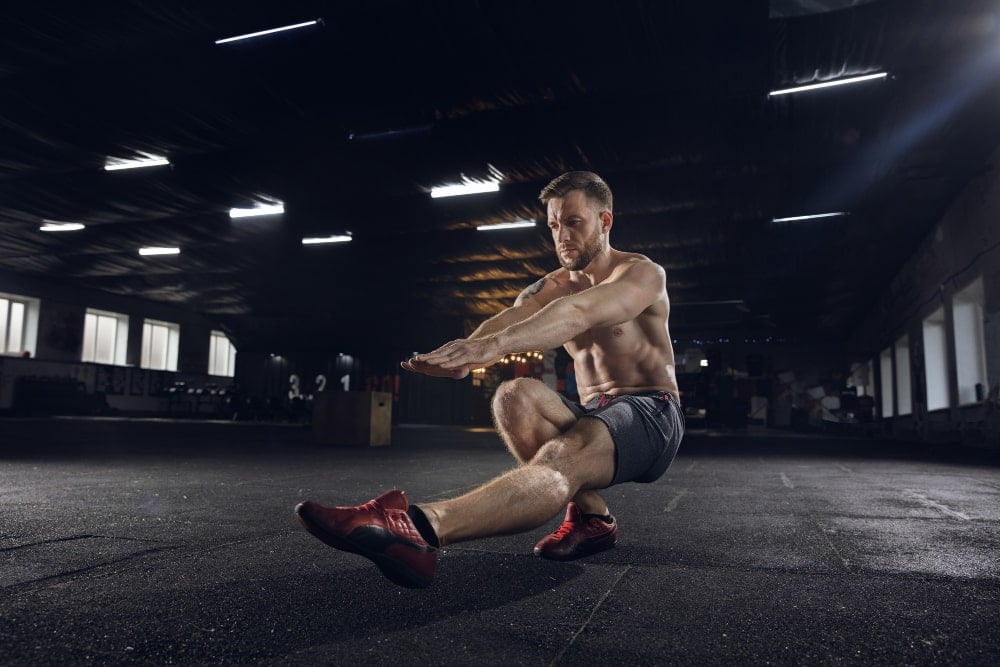
Vertical Jump Workouts
To maximize your vertical jump, you need to train with a combination of plyometrics and weightlifting. For example, doing box jumps can help increase leg power. While adding either dumbbells or barbell squats in the same training day is going to enhance overall lower body strength. Other vertical jump workouts include:
Box Jumps
Box jumps are a great way to develop leg power and explosiveness. To get the most out of this exercise. Make sure that you’re exploding off of the ground as high as possible!
Here are some tips for box jumps:
- Start small: When first starting out, choose a box or platform that is lower than your maximum jump height. You can gradually increase the height as you become more comfortable and confident.
- Focus on landing softly: When you jump onto the box, make sure to land softly on the balls of your feet. This will help reduce the impact on your joints and prevent injury.
- Use your arms: Your arms can provide additional power to your jump. Swing your arms back as you prepare to jump, then use them to propel yourself upward.
- Engage your core: Your core muscles play an important role in stabilizing your body during the jump. Keep your abs engaged throughout the movement to help maintain proper form.
- Take a step down: Instead of jumping down from the box, step down one foot at a time. This will help reduce the impact on your joints and prevent injury.
- Rest between sets: Box jumps are a high-intensity exercise, so it’s important to give your body time to rest between sets. Take a few minutes to catch your breath and recover before starting your next set.
Depth Jumps
A more challenging version of the vertical jump that you may incorporate into your plyometric training regimen are depth jumps. Stand close to the edge of a plyo box or other high surface and perform depth leaps. Move away from the box and land in a quarter squat. Make a push into the ground, leap into the air quickly, and raise your arms above your head. Land softly and keep your core tight.
Some other benefits of Depth Jumps inlcude:
- Strengthen your lower body. The depth jump activates muscles across your lower body, including your glutes, hamstrings, and quadriceps.
- Increase your explosive strength. With practice, depth jumping can increase your explosive power, improving your reactive strength, jumping ability, and sports performance.
- Versatile home workout. Similar to other plyometric exercises, depth jumps are a great exercise to practice at home.
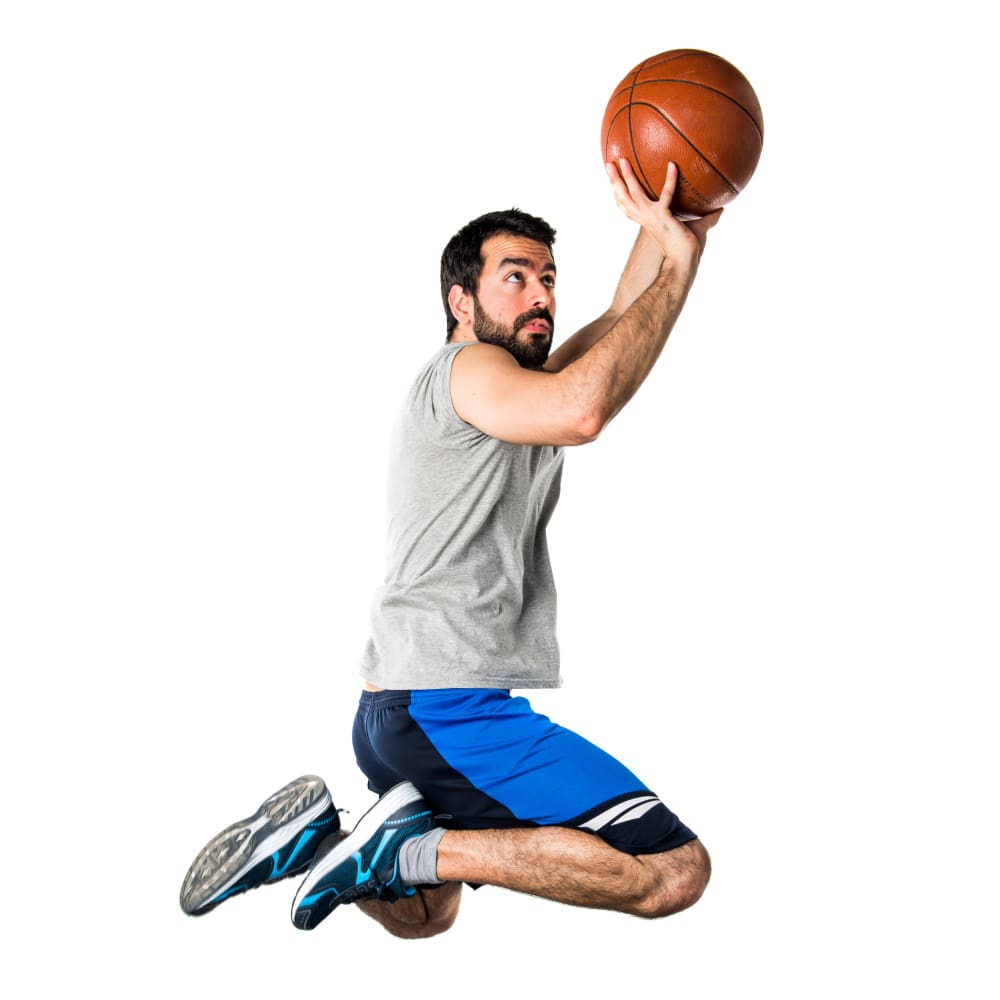
Explosive Pushups/Floor Presses
You can benefit from explosive pushups and floor presses by training similar to how NBA players do. This means doing explosive pushups and then immediately following that up with a set of bench presses (or you can use dumbbells instead).
- Explosive Pushup Tips:
The goal is for the chest, shoulder, arms & core muscles all to be involved in this exercise. So try not to just arch your back or shrug your shoulders when lowering yourself down towards the ground. Also, pay attention as much as possible to explosiveness at takeoff! The more time under tension from these reps being performed slowly will compare very poorly compared to going through them quickly which has been proven time after time again especially if dealing with athletes trying to increase their vertical leap.
- Floor Pressing Tips:
Floor pressing is a good way to increase upper body strength/power. Make sure that you’re going through this exercise as explosively as possible while keeping your feet flat on the ground at all times! You can’t get any benefit from being slow during these reps. So work hard and fast for maximum results in the minimal time frame.
The Diet
In order to perform at your best in athletic competition, you need to eat well. The following eating practices can help you nourish your body for optimum performance:
- Get hydrated: Maintaining peak sports performance requires drinking adequate water. If you’re involved in rigorous activity, aim to consume at least 8 to 10 cups of water daily.
- Eat a healthy, balanced diet: Eating a healthy, balanced diet will help guarantee that you’re getting all the nutrients your body needs to function at its peak. A balanced diet should include a mix of fruits, vegetables, whole grains, lean meats, and healthy fats.
- Eat smaller, more frequent meals and snacks throughout the day to assist maintain a steady energy level and stave off hunger. Eat something before and after your workout, and try to consume a meal or snack every three to four hours.
- Put carbs first: Since they are your muscles’ main source of fuel, it is crucial to eat enough of them to support your level of exercise. Fruits, vegetables, whole grains, and legumes are excellent sources of carbs.
- Incorporate protein: Protein helps to develop and repair muscular tissue. Try to include a source of lean protein with every meal and snack, such as chicken, fish, tofu, or Greek yogurt.
Train with Weights too!
Even though most people think NBA players don’t lift weights because they’re not trying to build up their muscles, but instead increase speed and agility, lifting weights will help improve power which in turn helps them jump higher.
Jump Rope
Jumping up and down while using a jump rope is a great approach to build up your explosiveness. For a greater challenge, you might add resistance bands to your ankles or legs. This activity will help you get ready for the game, whether it is leaping over obstacles, completing skips, or getting in some additional cardio training before practice begins.
How Often do I Train?
How much time you have throughout the day will determine this. Most athletes simply exercise for a few hours per week (usually about an hour to two in total per day).
Conditioning: Improving your vertical leap requires excellent physical condition. Higher jumps will result from less weariness as you condition yourself more.
Highest Jumpers in the NBA
The record for the highest vertical jump in the NBA is held by Michael Jordan at 48 inches. This record was achieved in 1987, during the slam dunk contest. This is about 12 inches higher than the average NBA player’s vertical jump height.
The second greatest vertical jump in NBA history was achieved by Darrell Griffith at 46 inches in 1980.
Other NBA players who are well-known for their high jumps include Jason Richardson and Anthony Webb – all of whom have a max vertical of over 40 inches.
Although NBA players have excellent genetics, what sets them apart from the competition is the amount of time they invest in training and skill development. They put in a lot of effort to reach where they are, just as you should put in a lot of effort to achieve your own aspirations & objectives!
Conclusion
It can be challenging to increase your vertical jump, but with the appropriate strategy and some attention, you’ll see results. The advice we provided should enable you to quickly reach NBA-like heights; all it needs is commitment! How high can you currently jump? Comment below with your thoughts and let us know.


